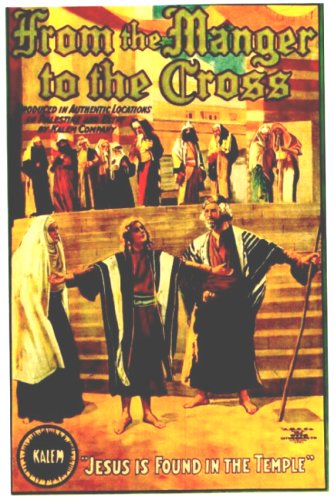

"From the Manger to the Cross" is noteworthy for being an early feature-length film. Otherwise, it's a static passion play.
Here's one that Mel Gibson can't touch.And yes it was filmed in Palestine 1912.
An account of the life of Jesus Christ, based on the books of the New Testament: After Jesus' birth is foretold to his parents, he is born in Bethlehem, and is visited by shepherds and wise men. After a stay in Egypt to avoid King Herod, his family settles in Nazareth.
Sidney Olcott certainly got around for Kalem in the 1910s. Having made a number of films for the studio in Ireland, he then travelled to the Holy Land to make this feature-length recreation of the life of Jesus.
This inaugurates a handful of Good Friday-related films that I will be watching all through this week. It is perhaps the first major effort on celluloid about the life of Christ but, being virtually a century old, cinematic technique was obviously still very primitive then; though the static camera-work makes the whole feel more like a succession of religious tableaux than a film, framing is generally pretty crammed and sometimes even offers admirable depth for its era.
From the Manger to the Cross (1912) * 1/2 (out of 4) Early Warner Bros. film is the typical telling of Jesus, as the title says, from the manger to the cross.
In Palestine, a virgin named Mary (Gene Gauntier) is visited by one of God's angels; subsequently, she becomes pregnant. Meanwhile, an angel of God invites Joseph, a son of David, to wed Mary.
Like many early films, it is a document. and to expect more is real strange.
Sidney Olcott's curious life of Christ was staple fare for 50s schoolkids under the guise of the terrible voiceover version distributed by Rev. Brian Hessian - this was the version I first saw and although the quality of the film, all its anachorisms aside, shone through, I didn't think the marriage of modernish narration to silent splendour worked at all.